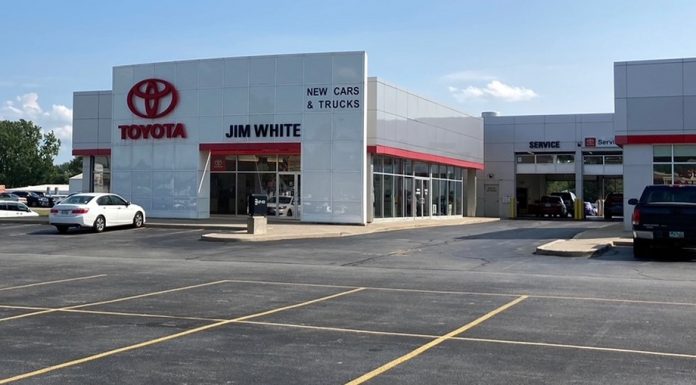(Headline USA) Back in the spring, a shortage of computer chips that had sent auto prices soaring appeared, finally, to be easing. Some relief for car buyers seemed to be in sight.
That hope has now dimmed. Asian countries that are the main producers of auto-grade chips have not been able to make up the supply shortage.
The shortage is further delaying a return to normal auto production and keeping the supply of vehicles artificially low.
And that means, analysts say, that record-high consumer prices for vehicles — new and used, as well as rental cars — will extend into next year and might not fall back toward earth until 2023.
The global parts shortage involves not just computer chips. Automakers are starting to see shortages of wiring harnesses, plastics and glass, too.
And beyond autos, vital components for goods ranging from farm equipment and industrial machinery to sportswear and kitchen accessories are also bottled up at ports around the world as demand outpaces supply in the face of a resurgent virus.
“It appears it’s going to get a little tougher before it gets easier,” said Glenn Mears, who runs four auto dealerships around Canton, Ohio.
Squeezed by the parts shortfall, General Motors and Ford have announced one- or two-week closures at multiple North American factories, some of which produce their hugely popular full-size pickup trucks.
Late last month, shortages of semiconductors and other parts grew so acute that Toyota felt compelled to announce it would slash production by at least 40% in Japan and North America for two months.
The cuts meant a reduction of 360,000 vehicles worldwide in September. Toyota, which largely avoided sporadic factory closures that have plagued rivals this year, now foresees production losses into October.
Nissan, which had announced in mid-August that chip shortages would force it to close its immense factory in Smyrna, Tennessee, until Aug. 30, now says the closure will last until Sept. 13.
And Honda dealers are bracing for fewer shipments.
“This is a fluid situation that is impacting the entire industry’s global supply chain, and we are adjusting production as necessary,” said Chris Abbruzzese, a Honda spokesman.
The result is that vehicle buyers are facing persistent and once-unthinkable price spikes.
The average price of a new vehicle sold in the U.S. in August hit a record of just above $41,000 — nearly $8,200 more than it was just two years ago, J.D. Power estimated.
With consumer demand still high, automakers feel little pressure to discount their vehicles. Forced to conserve their scarce computer chips, the automakers have routed them to higher-priced models — pickup trucks and large SUVs, for example — thereby driving up their average prices.
The roots of the computer chip shortage bedeviling auto and other industries stem from the government-enforced lockdowns last year.
U.S. automakers had to shut factories for eight weeks to help stop the virus from spreading. Some parts companies canceled orders for semiconductors.
At the same time, with tens of millions of people hunkered down at home, demand for laptops, tablets and gaming consoles skyrocketed.
As auto production resumed, consumer demand for cars remained strong. But chip makers had shifted production to consumer goods, creating a shortage of weather-resistant automotive-grade chips.
Then, just as auto chip production started to rebound in late spring, the highly contagious delta variant struck Malaysia and other Asian countries where chips are finished and other auto parts are made.
In August, new vehicle sales in the U.S. tumbled nearly 18%, mainly because of supply shortages. Automakers reported that U.S. dealers had fewer than 1 million new vehicles on their lots in August — 72% lower than in August 2019.
Even if auto production were somehow to immediately regain its highest-ever level for vehicles sold in the U.S., it would take more than a year to achieve a more normal 60-day supply of vehicles and for prices to head down, the consulting firm Alix Partners has calculated.
“Under that scenario,” said Dan Hearsch, an Alix Partners managing director, “it’s not until early 2023 before they even could overcome a backlog of sales, expected demand and build up the inventory.”
For now, with parts supplies remaining scarce and production cuts spreading, many dealers are nearly out of new vehicles.
Adapted from reporting by the Associated Press.

